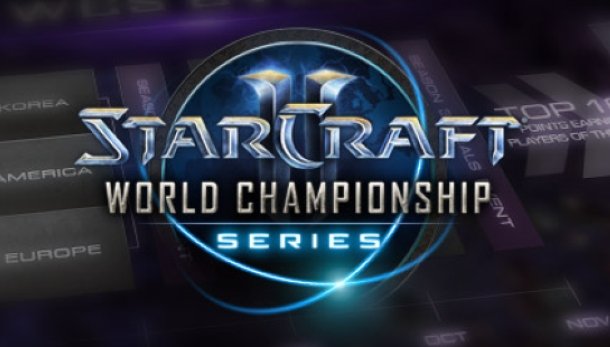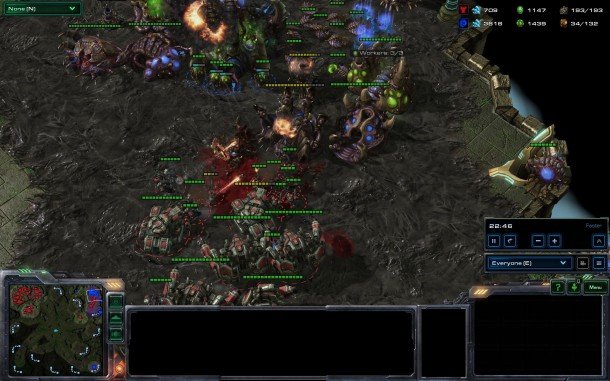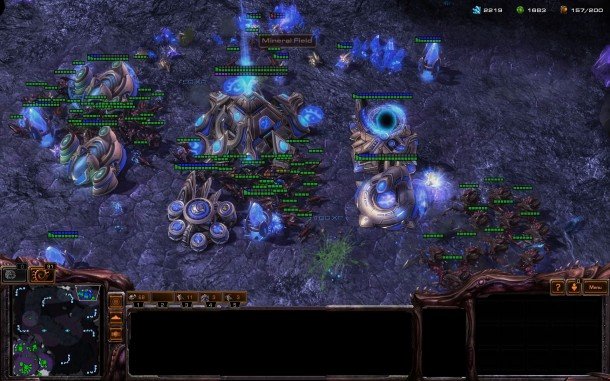Blizzard's StarCraft 2 WCS 2013 explained by company CEO Mike Morhaime

Blizzard announced their ambitious plans for the StarCraft 2 World Championship Series yesterday . The scheme involves pulling the world's biggest StarCraft 2 tournaments and leagues into an overarching structure where players are given a global ranking, and compete against each other to be crowned super-mega-planetary-ultra champion. It's an exciting plan - aiming to unify the myriad StarCraft 2 leagues and pull them into a central storyline easy to follow for fans and enticing to new viewers - but it's also a bit confusing. I had the chance to speak to Blizzard CEO Mike Morhaime and Executive VP of Global Publishing, Itzik Ben-Bassat to answer a few questions. Click on for WCS 2013 clarifications, and the Blizzard boss's projections for the eSporting future.
PC Gamer: Why did Blizzard decide to revamp the StarCraft 2 World Championship Series for 2013?
Mike Morhaime: We wanted to take the next step and involve the StarCraft 2 ecosystem.
The new system accomplishes two things: it creates a single storyline that's much easier to understand and follow throughout the year, with a global ranking system that makes it simple to track who the top players in the world are. And it allows us to manage scheduling conflicts – we ran into issues last year with a lot of conflicts. This structure allows us to minimise that.
"The new system creates a single storyline that's easier to follow and allows us to manage scheduling conflicts."
It also helps accessibility. We're in South Korea right now, and we announced that StarCraft 2 will be on television five days a week. Internationally it's also a really good story because we'll be broadcasting all three leagues via Twitch.tv in (720p) high definition, for free.
When you watch other sports, having a structure around that so you can see “oh, okay, that's the number one ranked guy in the world and he's playing the eighth ranked guy”. You build up a history over time, and I think that'll make the sport more accessible for people
PCG: How will the games be presented? Will we see highlight reels?
Keep up to date with the most important stories and the best deals, as picked by the PC Gamer team.
MM: There are definitely opportunities for that, and I think we'll get more creative with that as things go on. There are going to be a lot of important matches going on at a time, and we're going to want to help people navigate that. Just like you do when you open the sports page in the newspaper, very quickly you can see what happened, why it's important, and what happens next.

PCG: How will global rankings work?
MM: As the seasons complete, players will earn points based on how they did in each regional season, then the top finishing players will get invited to a global season finals and get additional points. All of these will be tallied and scored, and added up at the end of the season. At Blizzcon, the top 16 players will be invited to a competition and the winner will be our champion.
PCG: Is there going to be a points weighting for certain regions and competitions?
MM: It'll be a flat playing field, and all players will have to earn their slots. But people can compete in whichever region they want. So you'll probably get some people from Korea opting to play in regions outside of Korea. But each of the leagues will distribute the same number of points and the same monetary prize pool.
"It'll be a flat playing field, and all players will have to earn their slots. But people can compete in whichever region they want."
PCG: Are the prize pools for MLG, GSL, and other participating WCS leagues now provided by Blizzard?
MM: We're not getting into details on where the money's coming from. Blizzard is working in partnership with all of the tournament operators. We have announced the overall prize pool for 2013 – that'll be $1.6 million.
PCG: Will smaller tournaments still be allowed to run? Will they have to schedule around WCS events?
MM: They'll have to schedule around WCS events. The leagues are scheduled to run during the weeks, with the season finals occurring at specific points on the weekends during they year. So there are very few blackout days we're asking other tournaments avoid.
Itzik Ben-Bassat: The system was designed to be open. It's open for players to decided where they want to play, and it's open for other tournaments to still happen. Take the example of Dreamhack – Blizzard are big fans of Dreamhack – and WCS there last year was awesome. It was a very tough choice for us between ESL and Dreamhack (for our European WCS partner), and we were hesitating about it until the last moment. We informed Dreamhack that we decided to partner with ESL for WCS 2013; it doesn't mean that Blizzard won't partner with Dreamhack. We just don't partner with them for WCS specifically. We still want to see them organising awesome SC2 tournaments. We're going to talk with them about awarding [WCS] points to some of their Dreamhack tournaments. The same goes to other tournament organisers.

PCG: What's been the biggest influencer for you guys in making this change?
IBB: We looked at different sports. You've got different models. One model is the UFC model, where UFC own everything. They own the players, they own the league, they own the production, everything from A to Z. We looked at StarCraft, the tournaments and the great things the community have created – and decided we don't want to replace all of it. We want to be part of it. We want to create an engaging top level experience for viewers, but we still want to allow and support all of these elements going on.
So we partnered with some of the biggest people in the market in order to create these leagues. Blizzard is not trying to run offline events or sell advertising. Our model is more similar to the NFL. We keep the brand itself and the top level experience, but we're partnering with a lot of people who know how to do their job very well in order to bring this experience to players.
"Blizzard is not trying to run offline events or sell advertising. Our model is more similar to the NFL."
PCG: Will Blizzard ever pay players salary directly?
IBB: Our average prize money, if you look at the prize pools and run simulations of how much players get, is - according to our calculations - pretty impressive compared to other things in the market. The difference is we don't control their schedule, we don't control where they play.
PCG: You say you don't want to step in to dictate to the community, but this is more of a direct hand than we've seen previously in managing the StarCraft eSports scene. Why now?
MM: We recognised that we're in a unique position to make some changes to the top level of pro eSports, and to put a system in place with seven partners in the WCS.
A lot of observers of the StarCraft ecosystem were recognising there were a few issues: the scheduling conflicts of last year, for example, the complexities of following the storyline is another one. In order to take StarCraft 2 eSports to the next level, we have a responsibility to do something.
IBB: We really enjoyed WCS last year – some great stories from places like Brazil. But we also came to the conclusion that it's not our role to create the scale of community content. We should encourage the community to create that content and tournaments. But on the top level, the high quality experience, that's where we can bring our expertise in terms of what's best for the IP, and create storylines for people to watch.

PCG: These smaller territories, will they be incorporated into the WCS?
MM: We wanted to start with the three top regions – the places where eSports has matured to a level to support a full year-round peak. I think we're absolutely open to expanding it in the future, but it would have to be if there was a region that evolved to the point of producing enough top level players to justify it..
PCG: Where does eSports go next?
IBB: Where we want to go next with SC2 eSports is 24/7 broadcasting all around the world – matches, and content around the matches that captures viewers. Five years from now I think there's a dedicated SC channel that provides eSports entertainment.
MM: It's not that hard to imagine what Itzik's talking about when you imagine the awesome content that's created every day, not only by our tournament partners, but also the community in general. There's commentary, tutorials, all sorts of stuff. If Blizzard acted in a role being able to highlight the most polished content, I don't think it's hard to imagine we could fill a dedicated channel.
PCG: Do you see eSports rivalling regular sports in terms of popularity and viewership?
"StarCraft is bigger than the NHL. The numbers this year are double the numbers of last year."
MM: I absolutely do. I think in terms of accessibility, depth, drama and excitement, I think StarCraft has all of those things. Making the storyline simpler and easier to understand, I think it has the potential.
IBB: We were just told the other day that by numbers, StarCraft is bigger than the NHL. If you look just as the last month, we had several live broadcasts, MLG Dallas with record breaking concurrent viewers. Even the Heart of the Swarm release was really successful, with high viewership numbers.
The numbers this year are double the numbers of last year, and we hope to see this trend continuing. If we're able to double these numbers again next year, we're getting into very interesting mass market entertainment numbers - especially in the US.
PCG: When you first started work on StarCraft 2, did you see it becoming the global eSport it has?
MM: We thought it'd be a compelling eSport and a great game. I think we expected the viewership to be mostly centred in Asia, where it traditionally has been, and our big surprise is that actually SC2 eSports has taken off in the west. Right now, I'd say it's more popular in the west than in Asia.
We realised that immediately. If you go back to the first MLG in Anaheim - which I think took everybody by surprise - then it's just been really big in the west ever since.
PCG: What's been the biggest change in eSports in the last few years?
MM: The biggest change has been livestreams.

